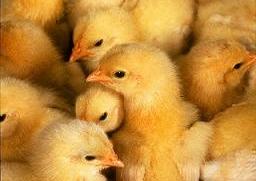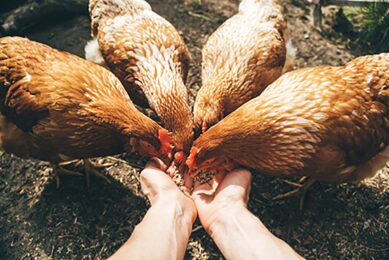Chicken sounds indicate stress

Ongoing research on laying hens has demonstrated that bird vocalizations can serve as reliable indicators of particular forms of stress and that different vocalization patterns can be linked with specific kinds of stressful conditions.
Knowing whether and when specific environmental conditions induce stress is a first step towards reducing stress in the production environment, according to Dr Michael J. Darre, a professor in the Department of Animal Science, University of Connecticut, and a member of The Poultry Science Association (PSA).
“Alleviating stress in commercial flocks of laying hens and broilers is important not only because it improves the overall welfare of the birds, but also because stress is a known enemy of production efficiencies,” said Dr Darre. “Research involving the analysis of chicken vocalisations may well provide the answer, because it is non-invasive and provides immediate and accurate feedback on levels and types of bird stress.”
The Dolittle Project
Joining Darre in his work on chicken vocalisations is one of his doctoral students, Ebenezer Otu-Nyarko. They are participants in a wider study called the Dolittle Project: Classifying Animal Vocalisations. Funded through the National Science Foundation, the Dolittle Project is the first ever to apply modern speech-processing algorithms to animal vocalisations. The lead investigator of the Dolittle Project is Dr Michael Johnson, a professor in Marquette University’s Department of Computer and Electrical Engineering.
Chicken vocalisations as stress indicators
According to Dr Darre, one of the primary initial goals of the work on chickens was to determine if vocalisation patterns were the same for all types of stressors; research has shown that they are not. For example, vocalisation patterns have been found to be different for stress due to handling and stress due to overcrowding.
The analysis was carried out by digitally recording laying chickens’ vocalisations under different types of stressful conditions, and then, after removing background noise, analysing the recordings using a modified version of the Hidden Markov Model (HMM) with voice recognition algorithms. The modified HMM is a statistical model developed by Marquette University that represents both the temporal and spectral characteristics of audio signals. When applied to chicken vocalisations, HMM has achieved an overall condition classification accuracy of 74%.
Darre and Otu-Nyarko are also looking at how vocal patterns change from the time chickens hatch until they are adults.
The ultimate goal of their work is to develop a “black box” that can be placed in chicken houses that allows farmers to remotely monitor their birds, notifies the farmers when it detects stress vocalisations, and identifies the type of stress, so that action can be taken immediately.
“This kind of monitoring would help reduce overall stress in flocks and be a great step forward in improving the welfare of commercial bird flocks. This in turn would benefit farmers, and ultimately the consumer, via improved egg-laying and meat output due to the known benefits that accrue from keeping chickens in a lower-stress environment,” said Dr Darre.
Source: Poultry Science Association (PSA)
Related link:
Poultry Science Association (PSA)
Department of Animal Science, University of Connecticut













